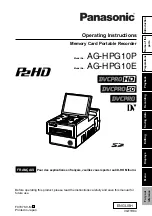
Commissioning and configuration
Leuze electronic GmbH + Co. KG
BCL 308
i
85
10.4 Additional settings for the BCL 308
i
After the basic configuration of the operating mode and the communication parameters, you need to carry
out further settings via the webConfig tool:
• Decoding and processing the read data
• Control of the decoding
• Control of the switching outputs
10.4.1 Decoding and processing the read data
The BCL 308
i
offers the following options:
• Setting the number of labels to be decoded for each reading gate (0 … 64). This is done via the
Max.
no. of labels parameter
.
• Definition of up to 8 different code types. Labels that match one of the defined code types are
decoded. Further parameters can be set for each code type:
• The code type (
symbology
)
• The
Number of digits
: either up to 5 different numbers of digits (e.g., 10, 12, 16, 20, 24), or a range
(
Interval mode
) and up to three additional numbers of digits (e.g., 2 … 10, 12, 16, 26)
• The
Reading reliability
: the set value specifies how many times a label must be read and decoded
with the same result before the result is accepted as valid.
• Additional code type specific settings (in the webConfig tool only)
•
Check digit method
used for decoding as well as the type of
check digit transmission
for the output of
the read result. The two possibilities for the latter are
Standard
(corresponds to the standard for the
selected code type/symbology) and not
Standard
.
Define at least one code type with the desired settings.
• Via webConfig:
Configuration -> Decoder
Data processing via the webConfig tool
In the
Data
and
Output
submenus of the
Configuration
main menu, the webConfig tool provides extensive
data processing options to adapt the functionality of the BCL 308
i
to the specific reading task:
• Data filtering and segmentation in the
Data
submenu:
• Data filtering according to characteristics for handling identical bar code information
• Data segmentation for differentiating between identifier and content of the read data
• Data filtering according to content and/or identifier in order to suppress the output of bar codes
with specific content/identifiers
• Completeness inspection of the read data
• Sorting and formatting the output data in the
Output
submenu:
• Configuration of up to 3 different sorting criteria. Sorting by physical data and content of the read
bar codes.
• Formatting of the data output for the HOST.
• Formatting of the data output for the display.
















































